МОНОГРАФИИ ПО МИКСОМИЦЕТАМ :
 |
Александрович Ю. Строенiе и развитiе споровместилищъ миксомицетовъ / Ю. Александрович. - Варшава, 1872. - 113с. [download]. |
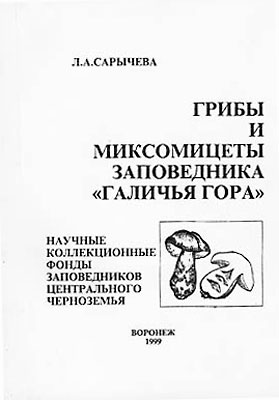 |
Сарычева Л.А. Грибы и миксомицеты заповедника "Галичья гора" / Л.А. Сарычева. - Липецк, 1999. - 150с. [download].
В монографии приводится аннотированный список грибов и миксомицетов, зарегистрирвоанных на территории заповедника "Галичья гора" (Липецкая область) и представленных в Фондовой микологической коллекции заповедника. Даны сведения по распространению, численности, фенологии и некоторым другим показателям 65 миксомицетов. |
 |
Bourke K. Slime: Wonderful World of Mucus + Online Access (2014). [Buy].
|
 |
Buyck B., Rammeloo J. Flore Illustree des Champignons d'Afrique Centrale, Fasc. 11: Diderma (Physarales Myxomycetes) and Echinosteliales et Stemonitales (Myxomycet.) (1983). [Buy]. |
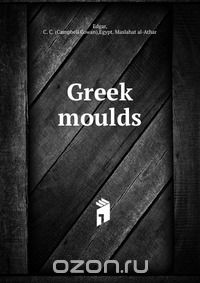 |
Campbell C.E. Greek moulds (2011). [Buy]. |
 |
Cooke M.C. Myxomycetes of Great Britain (2015). [Buy].
Excerpt from Myxomycetes of Great BritainFob half a century the Myxomycetes have been classified on the basis of external characters alone, or such only as could be discerned by the aid of a pocket lens. In one or two instances an additional genus has been constituted in which some prominence was given to characters determined by the aid of the microscope, as for instance in the genus Badhamia proposed by Berkeley in 1851, but the general feature of the classification was one of external characteristics. The advance of Microscopy left behind such an incomplete system for many years, and at length Professor de Bary turned his attention to the subject but made no definite propositions for a rectification of the classification, until in 1873 his pupil at Strasburg, Dr. Joseph Rostafinski, published in an inaugural address the outlines of a system of classification, based on new principles. In 1875, the more elaborate, and detailed "Monografia Sluzowce" expanded and illustrated his views in a complete and almost exhaustive manner. This work being, unfortunately, printed in the Polish language, and most difficult to obtain through the ordinary channels of trade, it appeared advisable to present to English readers as much of it as referred to British species in a more familiar language, and hence the present work.At first Rostafinski recognized in the "Mycetozoa," as he termed them, two primary divisions, in one of which the spores were developed externally, on the surface of certain definite spore-bearers, and in the other they were developed internally, covered at first by a protective membrane or sporangium.About the PublisherForgotten Books publishes hundreds of thousands of rare and classic books. Find more at www.forgottenbooks.comThis book is a reproduction of an important historical work. Forgotten Books uses state-of-the-art technology to digitally reconstruct the work, preserving the original format whilst repairing imperfections present in the aged copy. In rare cases, an imperfection in the original, such as a blemish or missing page, may be replicated in our edition. We do, however, repair the vast majority of imperfections successfully; any imperfections that remain are intentionally left to preserve the state of such historical works. |
 |
Drozdowicz A., Ronikier A., Stojanowska W., Panek E. Myxomycetes of Poland - A Checklist (2003). [Buy].
The first comprehensive checklist of the Polish slime moulds (Myxomycetes). The list contains 222 species arranged alphabetically. For each species a Latin and Polish name are provided along with the substrate description and references to source literature. The main list is supplemented by several indexes: The index of Latin names; Index of Polish names; Index of the authors of myxomycetes' names. |
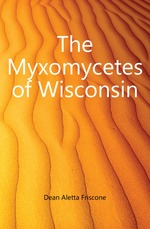 |
Friscone D.A. The Myxomycetes of Wisconsin (2011). [Buy].
|
 |
Hagelstein R. The Mycetozoa of North America / R. Hagelstein. - Mineola, New York, 1944. - 352p. [download].
|
 |
Ing B. Provisional Atlas of Mycomycetes of the British Isles (1982). [Buy].
|
 |
Ing B. The Myxomycetes of Britain and Ireland: An Identification Handbook (1999). [download].
The first book this century to cover these fungi comprehensively. The introductory chapters cover life history, structure, ecology and distribution, how to find and collect material, bark culture techniques, microscopic examination and herbarium storage. The main section is devoted to identification, and includes keys, descriptions and illustrations. |
 |
Ing B. Biodiversity in the North West: The Slime Moulds of Cheshire (2011). [Buy].
The county of Cheshire, in its broadest, historical sense, has a rich diversity of wildlife, linked to a varied geology and land use. This is an account of a group of strange but fascinating organisms, the slime moulds, which straddle the boundaries between fungi and protozoans. After a short introduction to the biology and ecology of slime moulds, the physical and ecological environment of wider Cheshire is described. The main body of the work is a detailed catalogue of all the species ever recorded in the district. The records date back into the 19th century but are mostly concentrated in the last 40 years, since the author came to Chester. There are more than 90 maps, on a 5 km grid square base, of the commoner species. |
 |
Krieglsteiner L.G. Verbreitung, Okologie und Systematik der Myxomyceten im Raum Regensburg: (einschlie?lich der Hochlagen des Bayerischen Waldes) (1993). [Buy]. |
 |
Lado C., Pando F. Flora Mycologica Iberica, Volume 2: Myxomycetes I: Ceratiomyxales, Echinosteliales, Liceales, Trichiales (1997). [Buy]. |
 |
Li Yu Flora Fungorum Sinicorum, Myxomycetes I [Chinese]: Ceratiomyxales, Echinosteliales, Liceales, Trichiales (2008). [Buy]. |
 |
Li Yu Flora Fungorum Sinicorum, Myxomycetes II [Chinese]: Physarales and Stemonitales (2008). [Buy].
|
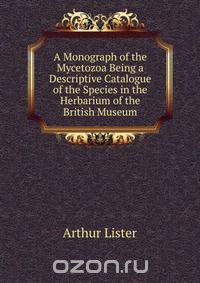 |
Lister A. Mycetozoa. A descriptive catalogue of the speciesin the Herbarium of the British Museum / A. Lister. - London, 1911. - 2 edition. - 548p.[download].
|
 |
Macbride T.H. The North American slime-moulds. Being a list of all species of Myxomycetes Hitherto described from North America, including Central America / T.H. Macbride. - New York: The Macmillan Company; London: Macmillan and CO, 1899. - 296p. [download]. |
 |
Macbride T.H. The North American slime-moulds. A descriptive list of all species of Myxomycetes Hitherto reported from the continent of North America with notes on some extra-limital species / T.H. Macbride. - New York: The Macmillan Company; London: Macmillan and CO, 1922. - 376p. [download].
|
 |
Macbride T.H. The Myxomycetes. A descriptive list of the known species with special reference to those occurring in North America / T.H. Macbride, G.W. Martin. - New York: The Macmillan Company, 1934. - 404p. [download].
|
 |
Macbride Th.H. The North American slime-moulds; a descriptive list of all species of myxomycetes hitherto reported [Buy]. |
 |
Macbride Th.H. The North American slime-moulds microform : being a list of all species of Myxomycetes hitherto described from North America [Buy]. |
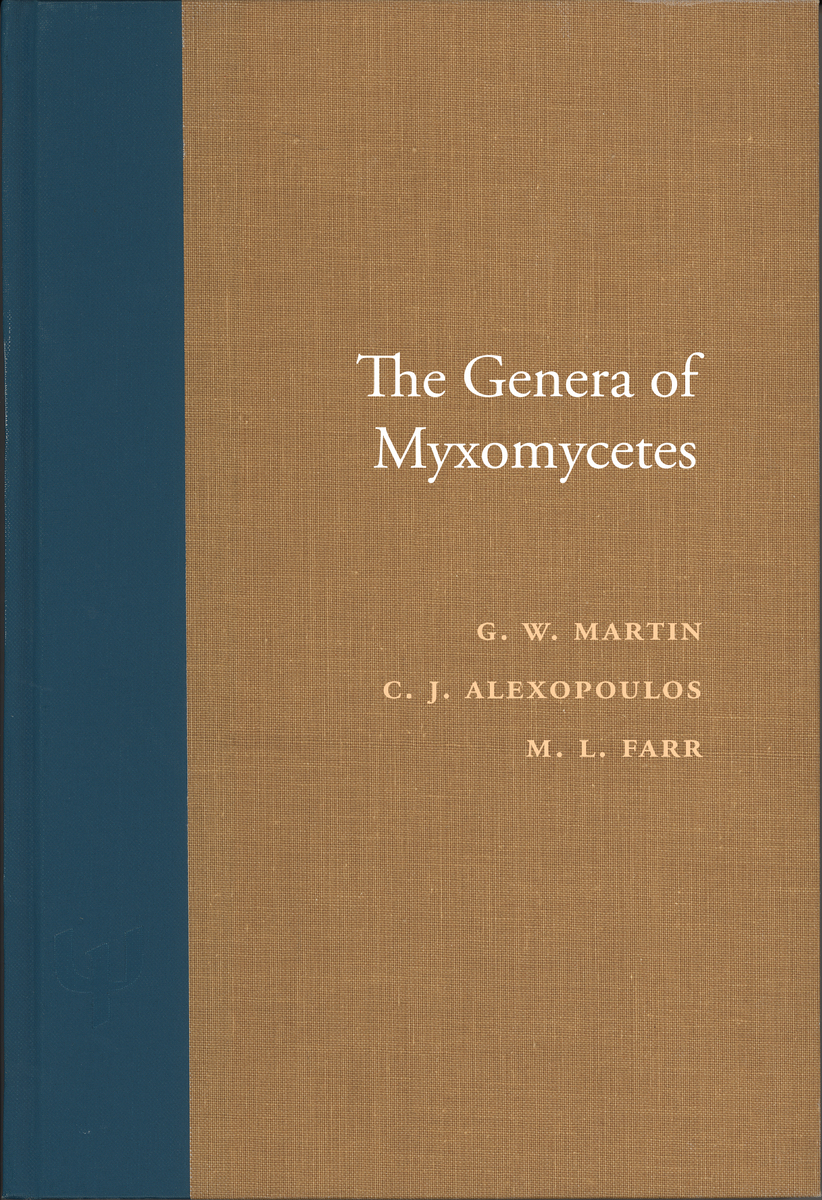 |
Martin G.W., Alexopoulos C.J., Farr M.L. Genera Of The Myxomycetes (1971). |
 |
Massee G. A monograph of The Myxogastres / G. Massee. - London, 1892. - 404p. [download].
|
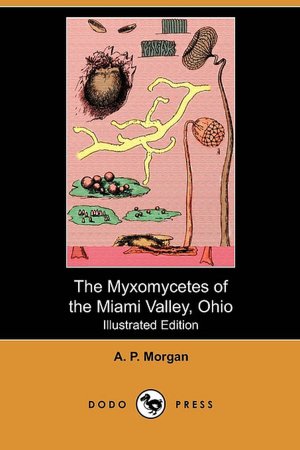 |
Morgan A. P. The Myxomycetes of the Miami Valley, Ohio (Illustrated Edition) (Dodo Press) (2009). [Buy].
|
 |
Nannenga-Bremekamp N.E. A Guide to Temperate Myxomycetes (1991). [Buy].
A classic Dutch reference, now available in translation. This is a systematic treatment of temperate myxomycetes, covering subclasses Ceratiomyxomycetidae and Myxogastromycetidae.
|
 |
Nowotny W. Wolfsblut und Lohblute: Lebensformen Zwischen Tier und Pflanze (2000). [Buy]. |
 |
Pascoe E. Slime, Molds and Fungi (1999). [Buy].
Aimed at young readers, the book introduces the subject, then brings to life the facts through hands on investigation and observation. |
 |
Poulain M.M., Meyer M., Bozonnet J. Les Myxomycetes (2-Volume Set) (2011). [Buy].
The books have compiled information on 853 taxa of myxomycetes (530 of them are illustrated in colour) in two complementary but inseparable volumes. The first volume deals with the biology and ecology of these organisms and the authors present keys of the species included, and add brief descriptions of each. These descriptions include macroscopic and microscopic characters and there is references to the corresponding plate in the second volume where the species is illustrated. Species from all five orders presently recognised in the Class Myxomycetes are included (Liceales, Echinosteliales, Trichiales, Physarales, and Stemomitales), and the nomenclature employed throughout follows the latest version of Nomenmyx. A glossary of descriptive terms and an index of taxa, as well as bibliographic references, complete this volume. The second volume is edited on special photographic paper and includes all the illustrations. Each species is dealt with in the form of an index card with the scientific name of the taxon, one or more macro-photographs in colour illustrating the habit of the species. Structurally significant details of the sporotheca, the capillitium or the peridium are sometimes also photographed and line drawings of relevant microscopic characters, such as the spore type and ornamentation or the capillitium, are included. The plate captions give the origin and details of material illustrated. Each photograph or figure is accompanied by the magnification used rather than a scale bar. There is extensive coverage of the nivicolous species, a group of myxomycetes of which the authors are well-known specialists, and there are some important novelties among the illustrations This rigorous and critical work, well coordinated by the three authors, is a pleasure to read and use. The project which began as a contribution to the recognition of nivicolous species of myxomycetes is now a treatise of myxomycetes from all over the world, of irrefutable scientific value, which should be included in every library of specialists, amateurs or other people interested in the myxomycetes. |
 |
Rammeloo J. Flore Illustree des Champignons d'Afrique Centrale, Fasc. 8-9: Trichiales (Myxomycetes) (1981). [Buy]. |
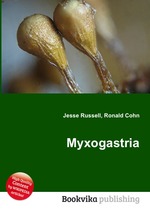 |
Ronald J.R. Myxogastria [Buy].
Myxogastria or myxogastrids, formerly known as Myxomycota, is a class of Mycetozoa, itself a grouping of slime moulds, that contains 5 orders, 14 families, 62 genera and 888 species. They are colloquially known as the plasmodial or acellular slime moulds. |
 |
Rostafinskiego J.T. Sluzowce (Mycetozoa) / J.T. Rostafinskiego. - Parys, 1875. - 466p. [download].
|
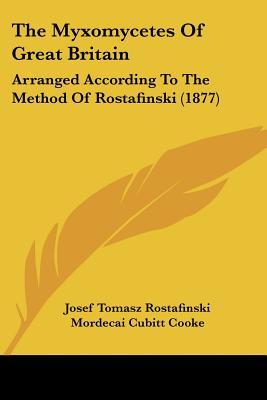 |
Rostfinski J.T. The Myxomycetes of Great Britain : Arranged According to the Method of Rostfinski (1877).[Buy].
This book is a facsimile reprint and may contain imperfections such as marks, notations, marginalia and flawed pages. This scarce antiquarian book is a facsimile reprint of the original. Due to its age, it may contain imperfections such as marks, notations, marginalia and flawed pages. Because we believe this work is culturally important, we have made it available as part of our commitment for protecting, preserving, and promoting the world's literature in affordable, high quality, modern editions that are true to the original work. |
 |
Rostafinski J.T. The myxomycetes of Great Britain. Arranged according to the method of Rostafinski. The characters of all the orders, families & genera, with descriptions of the British species, & original analytical tables (2012) [Buy].
|
 |
Sarah L. Where the Slime Mould Creeps: The Fascinating World of Myxomycetes (2014). [Buy].
Slime moulds are not slimy, nor do they look like mould; in fact, most are exquisite. Fuligo septica is an exception. This common cosmopolitan species forms amorphous yellowish blobs known variously throughout the world as "dog's vomit slime", "moon shit", "demon droppings"; or "snake poo". Plasmodial or acellular slime moulds – also known as Myxomycetes – are mysterious and ubiquitous, yet few people know they exist. One reason for this is their size. Their reproductive structures are so small that they are easily overlooked by all but a dedicated few prepared to search trees, logs, stumps and leaf litter with magnifying lens and torch. Naturalist, writer and photographer Sarah Lloyd is perfectly located to search for myxomycetes in the tall wet eucalypt forest that surrounds her home in northern Tasmania. Her photographs of over sixty species capture the colour and variety in their miniature spore-bearing "fruits". She is also ideally situated to document over hours and days some common but rarely seen events including actively feeding plasmodia (one of the two animal-like stages of a myxomycete) and the transformation of plasmodia to reproductive structures. In the 19th century three type specimens of myxomycetes – the original specimens used by an author to describe a new species – were collected from Tasmania. And even though cool temperate forests are known to be rich in myxomycetes and there have been occasional collecting trips to this remote corner of the world, it has taken a local naturalist to discover these riches and to share her passion for these ecologically important organisms. |
.jpg) |
Stephenson S.L., Stempen H. Myxomycetes: A Handbook of Slime Molds (2000). [Buy].
This field guide identifies all the species likely to be encountered, with extensive information on their structural features, distribution and ecological associations. |
 |
Stephenson S.L. The Fungi of New Zealand, Volume 3: Myxomycetes of New Zealand (2003). [Buy].
This volume aims to provide a comprehensive monographic treatment of the more than 180 species of myxomycete (plasmodial slime moulds) previously reported or known to occur in New Zealand. An overview of the group is given, including aspects of their biology and ecology, along with an explanation of the basic structural features of the fruiting body upon which identification is based. |
 |
Sturgis W.C. The Myxomycetes of Colorado (2012). [Buy].
|
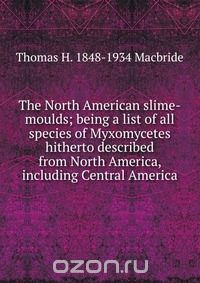 |
Thomas H. The North American slime-moulds; being a list of all species of Myxomycetes hitherto described from North America, including Central America [Buy]. |
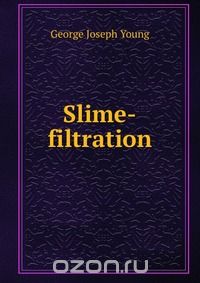 |
Young G.J. Slime-filtration (2011). [Buy]. |
 |
Stojanowska W. The Polish Bibliography of Slime Moulds (Myxomycetes). [Buy]. |
МЕНЮ :
История изучения миксомицетов
Методики сбора, гербаризации и определения миксомицетов
Съезды, симпозиумы, экспедиции и проведенные конференции